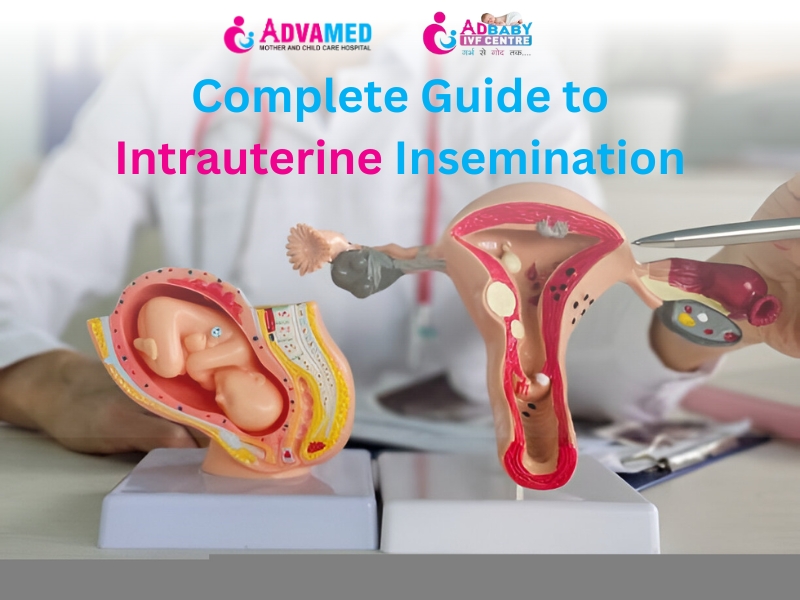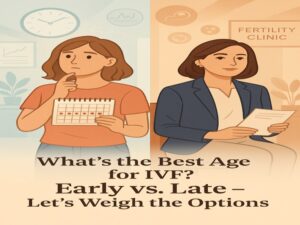You are probably here because you have heard of IUI and want to know if Intrauterine Insemination is right for you. Maybe you are exploring fertility treatment for the first time. Maybe your doctor mentioned it in passing and now you’re Googling everything from “what is IUI” to “does IUI hurt”.
Wherever you are in the process, this guide is here to give you a real-world, no-fluff overview of IUI : how it works, what to expect, and what’s currently shaping the trend in fertility clinics today.
I’m not a doctor, but I’ve done the research, read the studies, combed through patient forums and even spoken to people who’ve gone through it. What you’ll get here is a complete breakdown from someone who’s walked beside the process — and asked a lot of the same questions you probably have.
What Exactly is IUI?
IUI stands for intrauterine insemination. In plain English: it’s when a doctor places specially washed sperm directly into your uterus at the ideal time in your cycle — usually just before or during ovulation.
Why? Because this shortens the sperm’s journey, bypasses the cervix, and gives it a better chance at meeting the egg.
It’s often used in cases like:
- Unexplained infertility
- Low sperm count or motility
- Cervical mucus problems
- When using donor sperm
- Same-sex female couples or single women trying to conceive
Compared to IVF treatment, IUI is simpler, cheaper and far less invasive — but also comes with lower success rates, which we’ll talk about shortly.
What Does the IUI Process Look Like?
If you’re picturing a long, complicated medical journey — don’t. IUI is actually quite straightforward. Here’s what the timeline typically looks like:
1. Ovulation Tracking
You’ll either track ovulation using OPKs (ovulation predictor kits), bloodwork and/or ultrasound. Some people go with a natural cycle, while others take medication like Clomid or Letrozole to stimulate ovulation.
2. Sperm Collection and Washing
If you’re using your partner’s sperm, they’ll need to provide a sample. If you’re using donor sperm, the clinic will thaw and prep it for you. “Washing” the sperm removes any debris or non-motile sperm so only the best swimmers make it through.
3. Insemination
A thin catheter is inserted into your uterus to deliver the sperm. It takes less than 5 minutes. No anaesthesia. Some say it feels like a Pap smear — mildly uncomfortable, but tolerable.
4. The Wait
The two-week wait (TWW) begins. This is the part where you’re not supposed to Google every cramp or symptom… but you will anyway. Everyone does.
How Successful is IUI?
Here’s where expectations need a little managing.
The average success rate per IUI cycle is around 10–20%, depending on factors like:
- Age
- Sperm quality
- Whether medication was used
- Reason for infertility
If you’re under 35 with no known fertility issues and are using fertility meds, your chances per cycle could reach closer to 20%. But after 3 to 4 cycles if it has not worked many clinics recommend moving to IVF.
You will often hear stories of people getting pregnant on their first try — and others doing 5 or 6 IUIs with no luck. It’s unpredictable. That’s part of what makes the decision to try IUI such a personal one.
What Does IUI Cost?
A single IUI cycle usually costs between ₹8,000 and ₹15,000, depending on:
- Whether you use medication
- If you’re using donor sperm
- How much monitoring is involved
Compared to IVF (which can easily run ₹1.5–2.5 lakh per cycle), IUI is much more accessible. But keep in mind, costs can add up over multiple cycles.
Some clinics package 3 cycles at a slightly reduced cost. Worth asking about if you’re planning more than one attempt.
Does IUI Hurt?
Most people describe IUI as mildly uncomfortable. The catheter insertion might feel like a pinch or cramp, but it’s over quickly. Some feel bloated or crampy later that day, especially if ovulation meds were involved.
Honestly, the emotional part tends to be harder than the physical. The two-week wait can feel like a mental rollercoaster. If you’re feeling anxious or discouraged, that’s completely normal. Talk to someone who gets it — a friend, a counsellor, or an online community.
What Are the Risks?
While IUI is low-risk, it’s not zero-risk. Here’s what to know:
- Multiple pregnancies: Ovulation-stimulating meds can increase your chance of twins or triplets. This is monitored closely.
- Ovarian hyperstimulation syndrome (OHSS): Rare but possible if you’re using fertility meds.
- Cramping or spotting: Common after insemination, but usually not a cause for concern.
- Infection: Very rare, especially if the clinic uses sterile techniques (which it should).
Make sure your clinic explains these risks and walks you through the process step by step.
Is IUI Right For You?
Here’s where things get personal.
IUI can be a great first step if:
- You’re under 35 and have been trying for 6–12 months
- You’re dealing with mild male factor infertility
- You have open fallopian tubes
- You’re using donor sperm
- You’re not ready (financially or emotionally) for IVF
It might not be the best fit if:
- You’ve had multiple failed IUIs already
- You have blocked tubes or severe endometriosis
- Your partner has very poor sperm quality
- You’re over 38 and want to maximise time
Every situation is different. The right move for someone else may not be right for you. Trust your instincts and your doctor’s guidance.
What’s the Current Trend?
One of the biggest trends right now is earlier access to IUI for non-traditional families. More clinics are seeing single women and same-sex couples use IUI to build families on their own terms.
There’s also a growing shift toward:
- Using IUI with medicated cycles to boost success
- Frozen donor sperm banks becoming more accessible online
- Telemedicine consultations for fertility patients in smaller cities
On social media, more people are documenting their IUI experiences publicly — which, to be honest, is changing how transparent and supportive this space feels. TikTok, YouTube and Reddit are full of first-hand journeys. It’s helping people feel less alone, and giving a clearer picture of what to expect.
One Reddit user described IUI like this:
“It’s like buying a lottery ticket — not expensive, low risk, and you hope it pays off. But you also don’t expect to win the jackpot on the first go.”
That stuck with me.
What Do the Experts Say?
Experts says :
“IUI can be a good first step for many couples, especially those with unexplained infertility or mild male factor issues. But it should be timed well and done under proper guidance to improve chances.”
Research from the American Society for Reproductive Medicine suggests doing up to 3–4 IUI cycles before moving on to IVF — as long as there’s no medical reason to skip ahead.
What’s Still Unclear?
Even with all the data, there’s still a lot we don’t know about why IUI works for some and not for others. Two people can have nearly identical test results and completely different outcomes.
There’s also debate around:
- Whether medicated or natural IUI cycles work better
- How much timing actually matters (spoiler: it does)
- How useful sperm morphology is as a predictor of success
And of course, fertility treatment outcomes still carry a heavy emotional toll. Mental health support is often missing from the conversation — and it shouldn’t be.
Final Thoughts
IUI isn’t magic, but it can work. For some, it’s the first stop on the journey to parenthood. For others, it’s a stepping stone toward IVF. Either way, it’s a real option with real potential — and one that deserves to be explained clearly.
If you’re considering IUI, take the time to ask questions. Track your cycle. Know your numbers. Be kind to yourself.
The future of IUI will likely bring better diagnostics, more personalisation and higher success rates — but even now, it offers hope to thousands of people every year.
And if you’re in the middle of your own IUI story — or just beginning — I hope this guide gave you a clearer path forward.
FAQ’s
1. How long does the IUI process take?
The actual insemination takes about 5–10 minutes. But the full process, including ovulation tracking, ultrasounds, and medication (if prescribed), spans roughly 2 weeks each cycle.
2. Can I go back to work after the IUI procedure?
Yes, you can. Most people resume normal activities immediately after the procedure. There’s no downtime required unless your doctor advises otherwise.
3. What should I avoid after an IUI?
There’s no strict “bed rest” rule. But it’s wise to avoid:
- Heavy exercise
- Alcohol or smoking
- Stress (as much as possible)
Gentle walks, hydration, and relaxation are your best friends here.
4. Can IUI work on the first try?
Yes, it can—but it often takes multiple cycles. On average, the per-cycle success rate is 10–20%, depending on your age and other factors.











